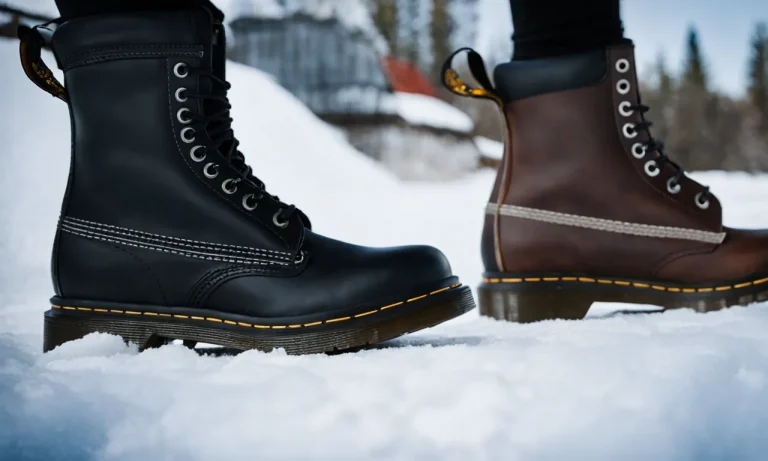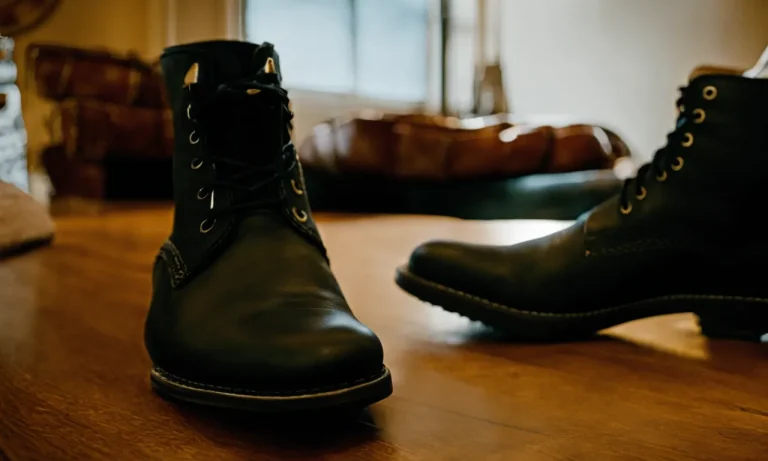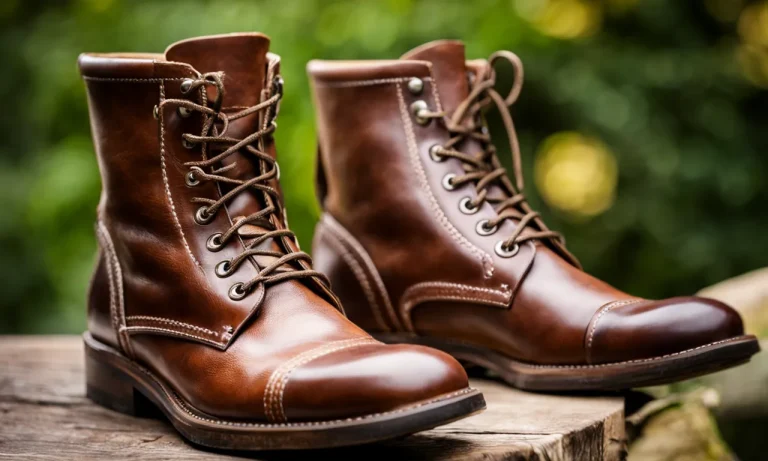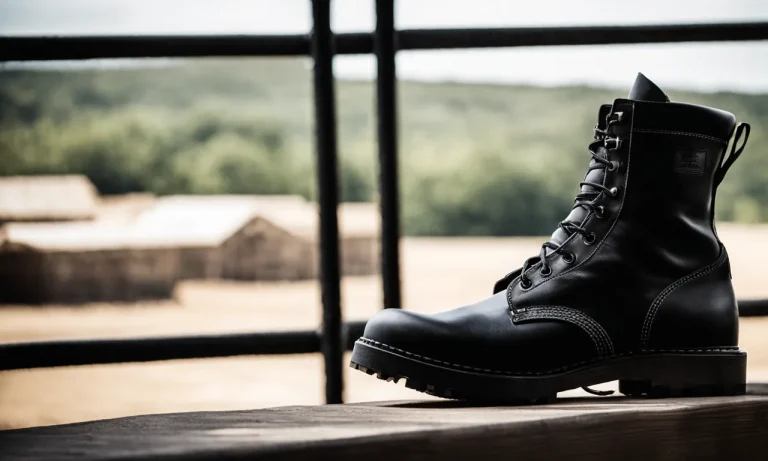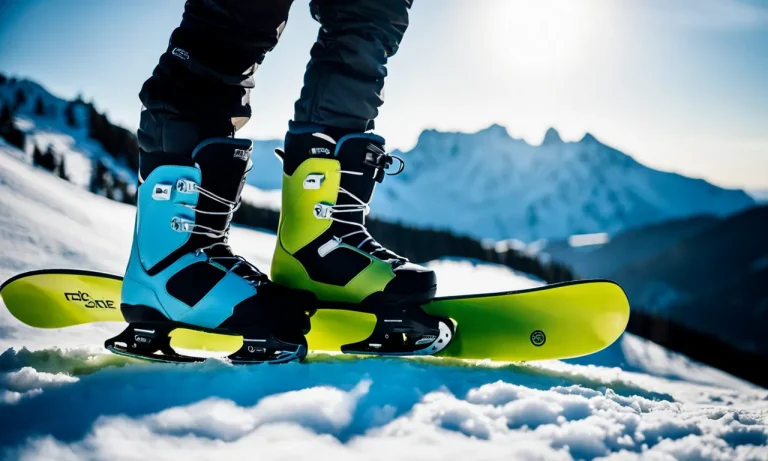Whether you’re a diehard cowboy boot fan or just looking to switch up your hiking footwear, you may be wondering if it’s possible to hike in your trusty cowboy boots. The short answer is yes, you can hike in cowboy boots!
While not ideal for serious backpacking trips, cowboy boots can work for day hikes on relatively flat and smooth trails.
In this comprehensive guide, we’ll cover everything you need to know about hiking in cowboy boots, from the pros and cons to tips for choosing the right boot and keeping your feet comfortable on the trail.
The Pros and Cons of Hiking in Cowboy Boots
Pros:
- Style and Confidence: One of the biggest pros of hiking in cowboy boots is the undeniable style and confidence they bring to your outdoor adventures. With their distinctive design and rugged appearance, cowboy boots can make you feel like a true trailblazer, ready to conquer any terrain.
- Durability: Cowboy boots are known for their durability. They are typically made from high-quality materials such as leather, which can withstand the wear and tear of hiking trails. This makes them a reliable choice for those who engage in frequent hiking activities.
- Protection: Cowboy boots provide excellent ankle support, which is crucial when navigating uneven or rocky terrain. The sturdy construction of these boots can help protect your feet from potential injuries, such as twisted ankles or sprains.
- Water Resistance: Some cowboy boots are designed to be water-resistant or have waterproof features. This can be beneficial when hiking in wet or rainy conditions, as your feet will stay dry and comfortable throughout the hike.
Cons:
- Lack of Traction: Cowboy boots are not specifically designed for hiking, and therefore, they may not provide the same level of traction as hiking boots. This can be a disadvantage, especially on slippery or muddy trails where a good grip is essential for stability.
- Comfort: While cowboy boots are durable, they may not offer the same level of comfort as hiking boots. Hiking boots are designed with features such as cushioning and arch support to provide maximum comfort during long hikes.
Cowboy boots, on the other hand, may take some time to break in and may not provide the same level of comfort right away.
- Weight: Cowboy boots tend to be heavier than hiking boots due to their construction and materials. This extra weight can be tiring during long hikes, especially if you are carrying a heavy backpack or hiking on challenging terrains.
- Limited Functionality: Cowboy boots are primarily designed for horseback riding and ranch work, and their design may not be suitable for all hiking activities. They may lack features such as toe protection, insulation, or breathability, which are commonly found in hiking-specific footwear.
It is important to consider these pros and cons before deciding to hike in cowboy boots. While they can certainly add style and uniqueness to your outdoor adventures, they may not offer the same level of performance and functionality as hiking boots.
Ultimately, the choice depends on your personal preferences, the type of hike you plan to undertake, and the specific conditions of the trails you will be exploring.
Choosing the Right Cowboy Boots for Hiking
When it comes to hiking in cowboy boots, choosing the right pair is essential for comfort and safety. Here are some key features to look for when selecting cowboy boots for hiking:
Key Features to Look For:
- Durability: Look for cowboy boots made with high-quality materials that can withstand rugged terrain and constant use.
- Support: Opt for boots with excellent arch support and cushioning to prevent foot fatigue and provide stability.
- Waterproofing: Consider boots with waterproof or water-resistant features to keep your feet dry in wet or rainy conditions.
- Traction: Look for boots with slip-resistant soles to ensure a firm grip on different surfaces.
- Fit: It’s crucial to find boots that fit properly and allow enough room for your toes to move comfortably.
Types of Soles:
The type of sole on your cowboy boots can greatly impact your hiking experience. Some popular options include:
- Vibram Soles: These soles are known for their excellent traction and durability, making them a great choice for hiking in rugged terrain.
- Rubber Soles: Rubber soles provide good grip and are resistant to oil and grease, making them suitable for various hiking conditions.
- Cork Soles: Cork soles offer excellent shock absorption and conform to the shape of your foot over time, providing a customized fit.
Leather or Suede Upper:
When it comes to the upper material of your cowboy boots, both leather and suede have their advantages. Leather is known for its durability and ability to withstand rough conditions, while suede offers a softer and more flexible feel.
Consider your hiking environment and personal preference when choosing between the two.
Boot Height:
The height of your cowboy boots can vary, and it’s important to choose a height that suits your hiking needs. Higher boots provide better ankle support and protection, especially when traversing uneven terrain. However, shorter boots may offer more flexibility and breathability.
Consider the type of hiking you plan to do and choose a boot height accordingly.
Tips for Hiking Comfortably in Cowboy Boots
Break Them in First
Before embarking on a hiking adventure in cowboy boots, it is crucial to break them in properly. Cowboy boots are known for their durability and style, but they can be uncomfortable if not worn in beforehand. To break them in, wear them around the house, take short walks, or even wear them to work.
This will help the boots mold to your feet and prevent blisters or discomfort on the trail.
Wear the Right Socks
Choosing the right socks can make a significant difference in your hiking experience with cowboy boots. Opt for moisture-wicking socks that will keep your feet dry and comfortable throughout the hike. Avoid cotton socks as they tend to retain moisture, which can lead to blisters.
Consider investing in hiking-specific socks that provide cushioning and support in key areas.
Use Orthotic Inserts
If you find that your cowboy boots lack arch support or cushioning, consider using orthotic inserts. These inserts can provide additional comfort and support for your feet during long hikes. They can help distribute pressure evenly and alleviate any discomfort caused by the boots.
Consult with a podiatrist or shoe specialist to find the right orthotics for your specific needs.
Bring Extra Socks
Even with the right socks, it’s always a good idea to bring extra pairs when hiking in cowboy boots. Unexpected weather changes or water crossings can leave your feet wet and uncomfortable. By having extra socks on hand, you can easily change into dry ones and prevent blisters or other foot issues.
Pack them in a waterproof bag to ensure they stay dry throughout the hike.
Carry Boot Repair Supplies
When hiking in cowboy boots, it’s essential to be prepared for any potential damage or wear and tear. Carry a small repair kit that includes items such as boot glue, replacement laces, and a boot brush. These supplies can come in handy if you encounter any issues with your boots while on the trail.
Being prepared will ensure that minor problems don’t ruin your hiking experience.
Consider Waterproofing
Depending on the hiking conditions and your preference, consider waterproofing your cowboy boots before hitting the trail. This will protect them from moisture and keep your feet dry in wet or muddy terrains.
There are various waterproofing products available on the market specifically designed for leather boots. Follow the instructions carefully to ensure proper application and maximum effectiveness.
Pack Light
While hiking in cowboy boots can be a unique and stylish experience, it’s important to remember that they are not designed for heavy-duty hiking. To avoid unnecessary strain on your feet and ankles, pack light. Opt for lightweight backpacking gear and only pack the essentials.
This will help reduce fatigue and make your hiking experience more enjoyable.
Ideal Trails and Conditions for Hiking in Cowboy Boots
Opt for Shorter, Flatter Hikes
When it comes to hiking in cowboy boots, it’s best to opt for shorter, flatter hikes. Cowboy boots are designed with a higher heel and a narrower toe, which can make them less suitable for long, strenuous hikes with steep inclines.
Instead, look for trails that are relatively flat and have a shorter distance to cover. These types of trails will allow you to enjoy the comfort and style of your cowboy boots without putting too much strain on your feet and ankles.
Avoid Rocky, Uneven Terrain
Cowboy boots may not provide the same level of traction and stability as traditional hiking boots, so it’s important to avoid rocky, uneven terrain. The smooth leather soles of cowboy boots can be slippery on loose gravel or steep, rocky surfaces, increasing the risk of slips and falls.
Stick to trails that are well-maintained and have a solid, even surface to minimize the chances of encountering difficult terrain that may be challenging to navigate in cowboy boots.
Best in Dry Conditions
While cowboy boots are often associated with the Old West and rugged landscapes, they are not the best choice for hiking in wet or muddy conditions. The leather used in cowboy boots is not as water-resistant as the materials used in hiking boots, which can lead to discomfort and potential damage to your boots.
It’s recommended to choose hiking trails that are dry and avoid hiking in rainy or muddy weather. This will help to preserve the integrity of your cowboy boots and ensure a more enjoyable hiking experience.
Conclusion
While hiking in your favorite cowboy boots may require some extra preparation and care, it can be a fun way to mix up your regular hiking routine on short, casual trails. Just be sure to break them in ahead of time, choose a style suited for hiking, and take steps to protect your feet on the trail.
With the right boots and some planning, you can confidently trek the trails in cowboy style.

